If you’re like me, you’ve probably noticed how sugar sneaks into almost everything we eat these days. From our morning coffee to “healthy” snacks, sugar is everywhere. And while a little bit of sweetness can make life more enjoyable, too much sugar can wreak havoc on your health. That’s why switching to a low-sugar diet is such a game changer—it helps you feel better, lose weight, and boost your energy levels.
But what exactly does a low-sugar diet look like? How do you know which foods to keep and which ones to ditch?

Don’t worry, I’ve got you covered. In this guide, I’ll walk you through the best low-sugar foods to eat, what to avoid, and how to make healthier choices every day. Check out our review for 1200-Calorie Diet.
Why Go for a Low-Sugar Diet?
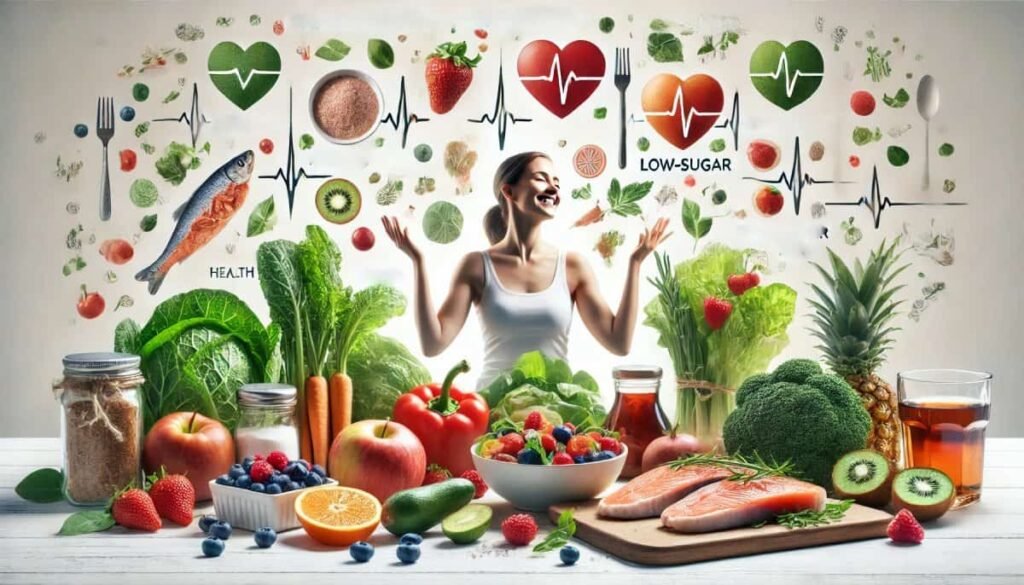
Before diving into the specifics of what to eat, let’s first understand why cutting back on sugar is such a big deal.
- Weight Loss: High-sugar foods are often loaded with empty calories, which can lead to weight gain. Reducing your sugar intake helps you cut out unnecessary calories and can make it easier to shed those extra pounds.
- Stable Energy Levels: Ever noticed how you feel an energy crash after a sugar-laden snack? That’s because sugar causes a spike in your blood sugar levels, followed by a crash. A low-sugar diet helps keep your energy steady throughout the day.
- Better Heart Health: Studies have shown that high-sugar diets can lead to increased risk of heart disease, high blood pressure, and high cholesterol. Cutting back on sugar is one simple way to support your heart health.
- Improved Skin: Too much sugar can contribute to inflammation, which can lead to skin issues like acne or premature aging. Eating less sugar may result in clearer, healthier skin.
Foods to Eat on a Low-Sugar Diet
Choosing the right foods is key to sticking to a low-sugar diet. Luckily, there are plenty of delicious and satisfying options that won’t send your sugar levels through the roof. Check out our review for MEVY Diet.
Whole Grains
Whole grains are packed with fiber, which helps slow down the absorption of sugar into your bloodstream.
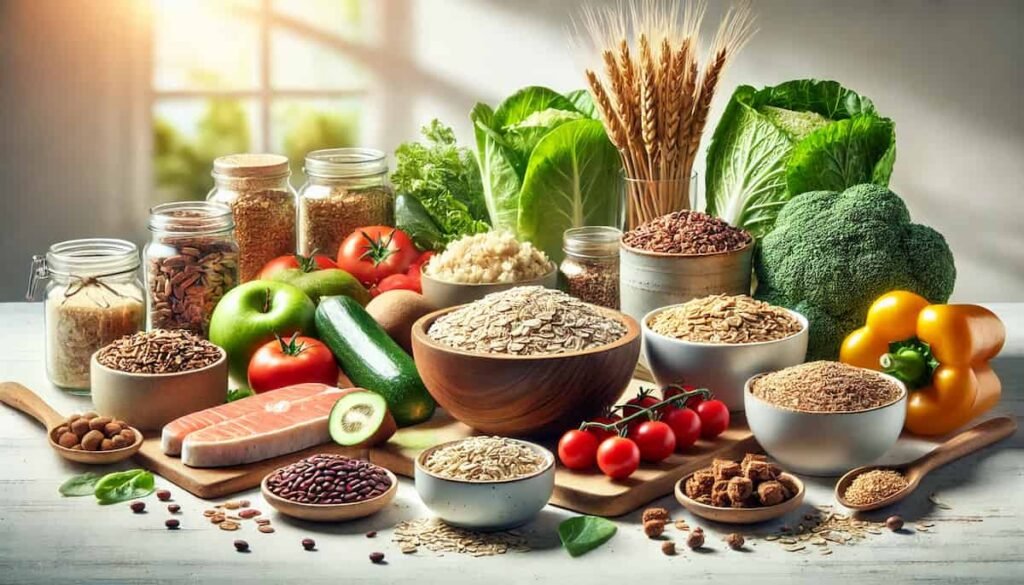
They also keep you full for longer, so you’re less likely to reach for sugary snacks.
- Oats: Great for breakfast, oats are a slow-burning carbohydrate that provides sustained energy.
- Quinoa: A complete protein, quinoa is both filling and versatile, perfect for salads, sides, or even breakfast bowls.
- Brown Rice: An excellent alternative to white rice, brown rice is unrefined and has more fiber and nutrients.
Vegetables
Vegetables should make up the bulk of your meals on a low-sugar diet. Check out our review for Collagen Diet.
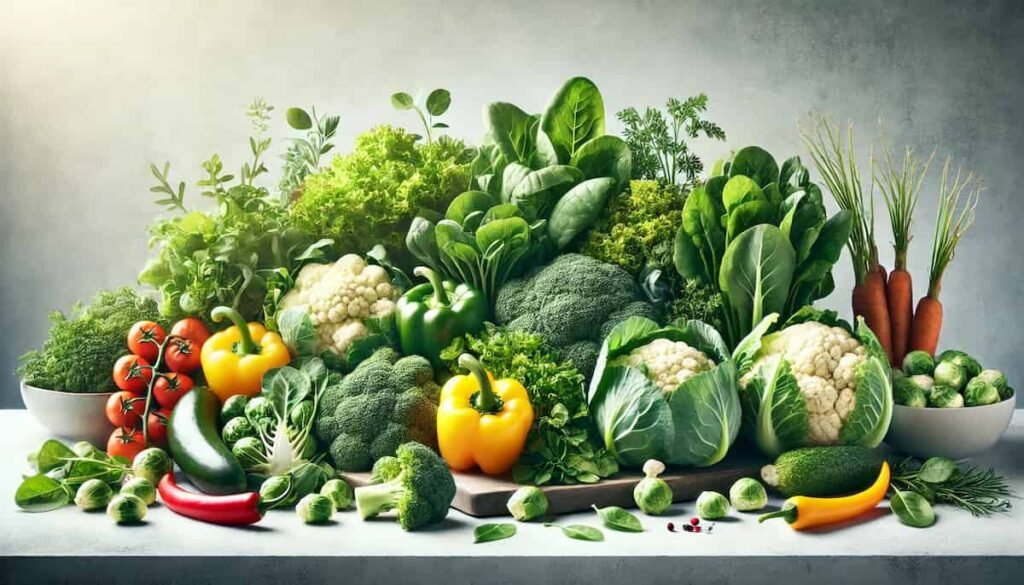
They’re naturally low in sugar and high in vitamins, minerals, and fiber.
- Leafy Greens: Spinach, kale, and arugula are packed with nutrients and extremely low in sugar.
- Cruciferous Vegetables: Broccoli, cauliflower, and Brussels sprouts are full of fiber and antioxidants.
- Bell Peppers: These colorful veggies are low in sugar and high in vitamin C, adding a sweet crunch to your meals without the sugar overload.
Protein-Rich Foods
Proteins help stabilize your blood sugar levels, making them essential on a low-sugar diet.
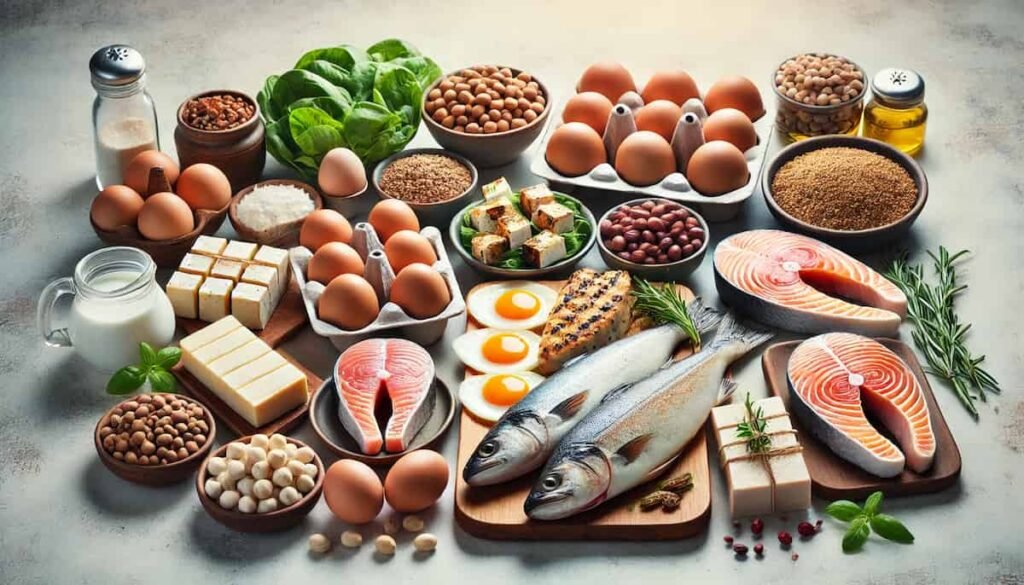
Plus, they keep you full longer, reducing cravings.
- Eggs: A great source of high-quality protein that’s low in sugar.
- Chicken Breast: Lean and versatile, chicken breast is perfect for any meal.
- Fish: Salmon, tuna, and mackerel are not only rich in protein but also in heart-healthy omega-3 fatty acids.
- Tofu and Tempeh: Plant-based proteins that are low in sugar and ideal for vegetarians and vegans.
Low-Sugar Fruits
Some fruits are naturally higher in sugar, but that doesn’t mean you have to avoid them completely.
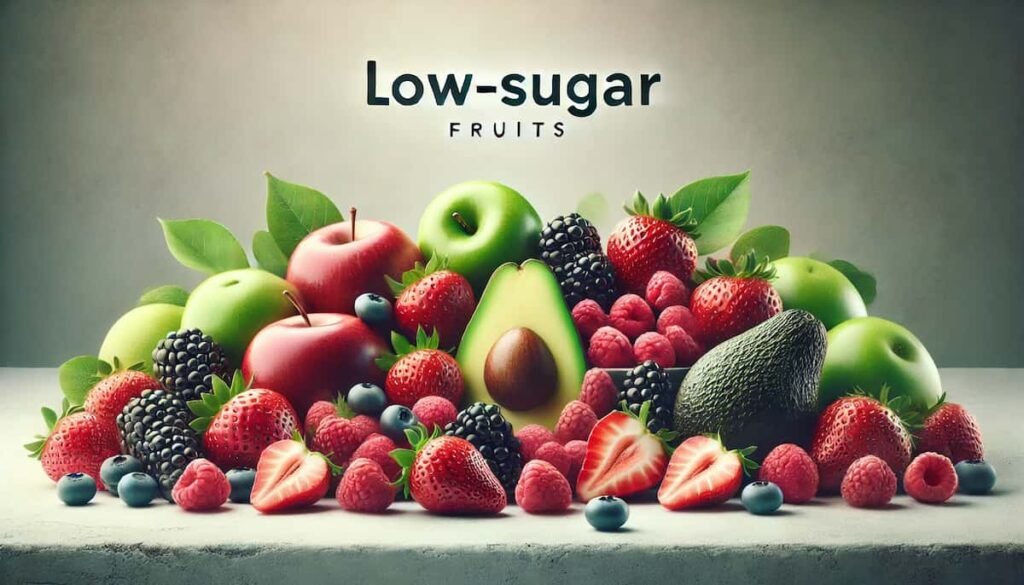
Just stick to low-sugar fruits in moderation. Check out our review for Ayurvedic Diet
- Berries: Strawberries, raspberries, and blackberries are loaded with fiber and antioxidants, and they’re some of the lowest-sugar fruits around.
- Avocados: Yes, technically a fruit! Avocados are low in sugar and high in healthy fats.
- Apples: While apples do contain sugar, they’re packed with fiber, which slows down the absorption of sugar into the bloodstream.
Healthy Fats
Healthy fats don’t raise your blood sugar and help keep you full and satisfied.
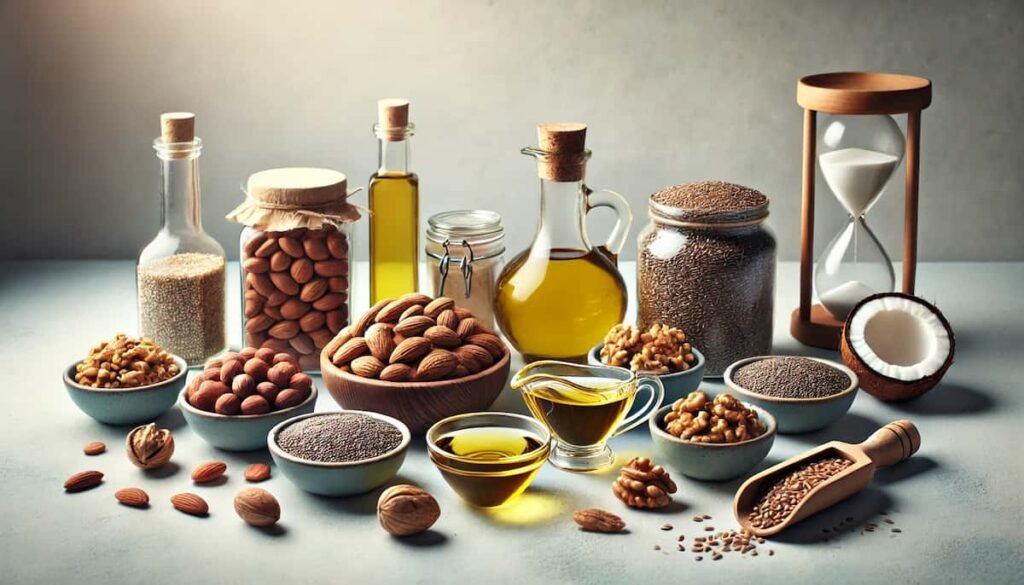
- Nuts and Seeds: Almonds, walnuts, chia seeds, and flaxseeds are nutrient-dense and have minimal sugar.
- Olive Oil: A staple in Mediterranean diets, olive oil is great for heart health and is sugar-free.
- Coconut Oil: Perfect for cooking and baking, coconut oil is a healthy fat that adds richness to your meals without added sugar.
Foods to Avoid on a Low-Sugar Diet
Just as important as knowing what to eat is knowing what to avoid. Some foods are deceptively high in sugar, even if they seem “healthy” at first glance. Check out our review for Paleo Diet.
Sugary Drinks
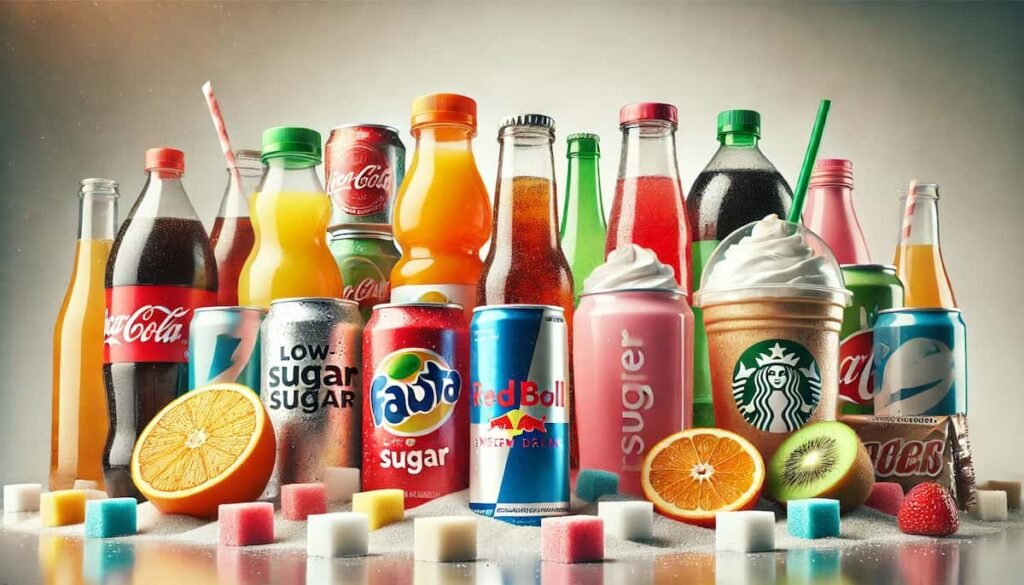
One of the biggest culprits of hidden sugar in our diets comes from beverages.
- Soda: Packed with sugar and empty calories, soda is a big no-no on a low-sugar diet.
- Fruit Juices: Even 100% fruit juice can be high in sugar, so it’s best to avoid or drink in moderation.
- Energy Drinks: These drinks may give you a quick boost, but they often contain a ton of added sugar.
- Sweetened Coffee Drinks: Watch out for flavored coffee drinks like lattes and frappuccinos that can be loaded with syrups and sugar.
Refined Carbohydrates
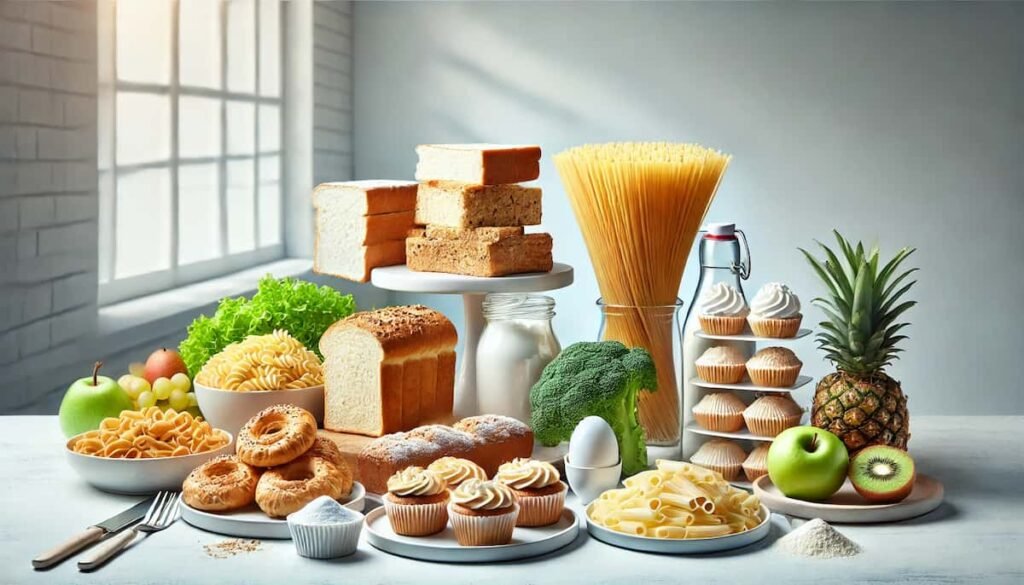
Refined carbs are stripped of their fiber and nutrients, and they can spike your blood sugar.
- White Bread: Opt for whole grain or sprouted grain breads instead.
- Pastries and Cakes: These baked goods are often loaded with sugar, making them a bad choice for anyone on a low-sugar diet.
- White Pasta: Like white bread, white pasta has little nutritional value and can cause a spike in blood sugar.
Processed Snacks
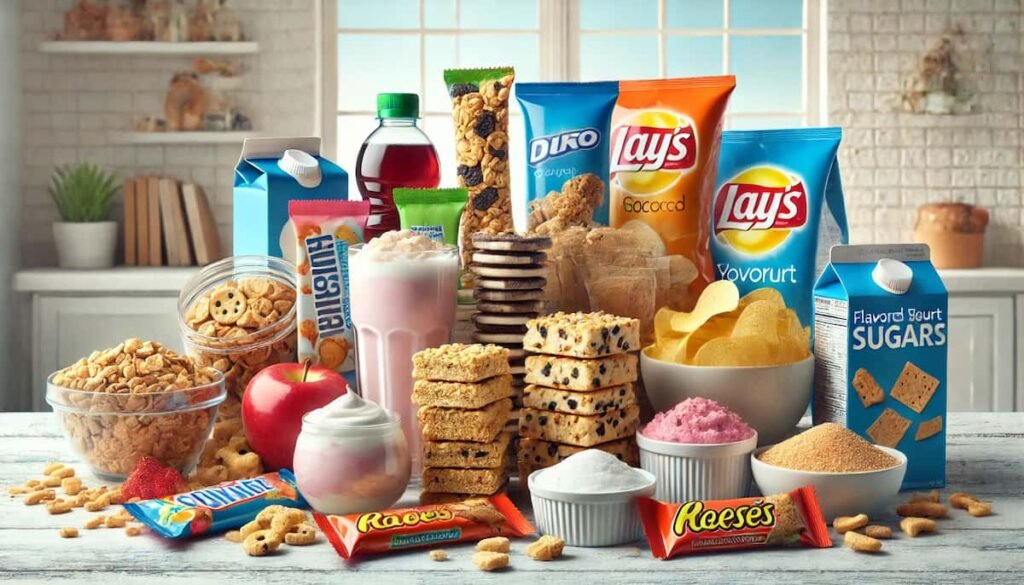
Many processed snacks are full of hidden sugars and preservatives.
- Granola Bars: They may seem healthy, but many are packed with sugar.
- Flavored Yogurts: Always check the label—many flavored yogurts contain as much sugar as a candy bar!
- Chips and Crackers: These snacks often contain refined carbs and added sugars, making them a poor choice.
Candy and Sweets
This one’s obvious, but it still bears repeating. Candy, chocolates, and other sweets are best avoided on a low-sugar diet. Check out our review for High-Protein Diets.
Low-Sugar Diet: What to Eat vs. What to Avoid
Here’s a quick breakdown of what you should and shouldn’t eat on a low-sugar diet:
| Foods to Eat | Foods to Avoid |
|---|---|
| Whole grains (oats, quinoa) | Sugary drinks (soda, juice) |
| Leafy greens and veggies | Refined carbs (white bread) |
| Protein-rich foods (chicken) | Processed snacks (granola bars) |
| Low-sugar fruits (berries) | Candy and sweets |
| Healthy fats (nuts, avocado) | Flavored yogurts |
How to Stick to a Low-Sugar Diet

Starting a low-sugar diet can feel overwhelming, but there are a few tips that can help you stick with it long-term:
- Read Labels: Always check nutrition labels for hidden sugars, especially in packaged and processed foods.
- Meal Prep: Preparing meals at home lets you control the ingredients and avoid unnecessary sugar.
- Use Natural Sweeteners: If you need to sweeten your food, opt for natural sweeteners like stevia or monk fruit.
- Drink Water: Ditch sugary drinks and stick to water, herbal teas, or sparkling water with a splash of lemon.
- Find Low-Sugar Alternatives: Craving something sweet? Reach for fresh fruit, dark chocolate (70% cacao or higher), or unsweetened yogurt with a handful of berries.
Conclusion
A low-sugar diet can be a life-changing shift toward better health, more energy, and even weight loss. By focusing on whole, nutrient-dense foods and avoiding sugary processed snacks, you can create a sustainable eating plan that makes you feel great. Remember, it’s not about cutting out all sugar but making smarter choices about what you eat. Check out our review for DASH Diet.
FAQs
Is fruit bad for a low-sugar diet?
Not at all! While fruit contains natural sugars, many fruits—especially berries—are low in sugar and packed with fiber. Just be mindful of portions.
Can I still eat carbs on a low-sugar diet?
Yes, but stick to whole grains like oats, quinoa, and brown rice, which provide slow-burning energy and won’t spike your blood sugar.
How can I avoid sugar cravings?
Stay full with protein, healthy fats, and fiber-rich foods. If cravings hit, try drinking water, or opt for a small serving of low-sugar fruit like berries.
What are some hidden sources of sugar?
Sugar can hide in surprising places like salad dressings, pasta sauces, flavored yogurts, and even bread. Always check labels for added sugars.
Can I still have dessert on a low-sugar diet?
Yes! You can enjoy desserts in moderation. Try making your own low-sugar versions using natural sweeteners or opt for a square of dark chocolate.
Is a low-sugar diet good for weight loss?
Absolutely. Cutting back on sugar reduces empty calories and helps you maintain stable energy levels, which can aid in weight loss.